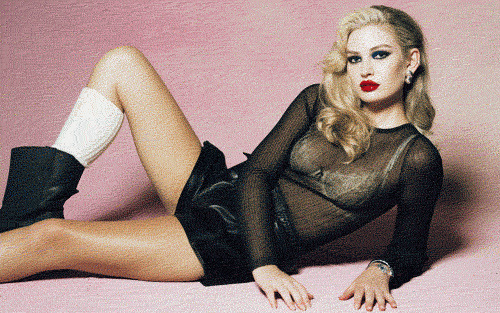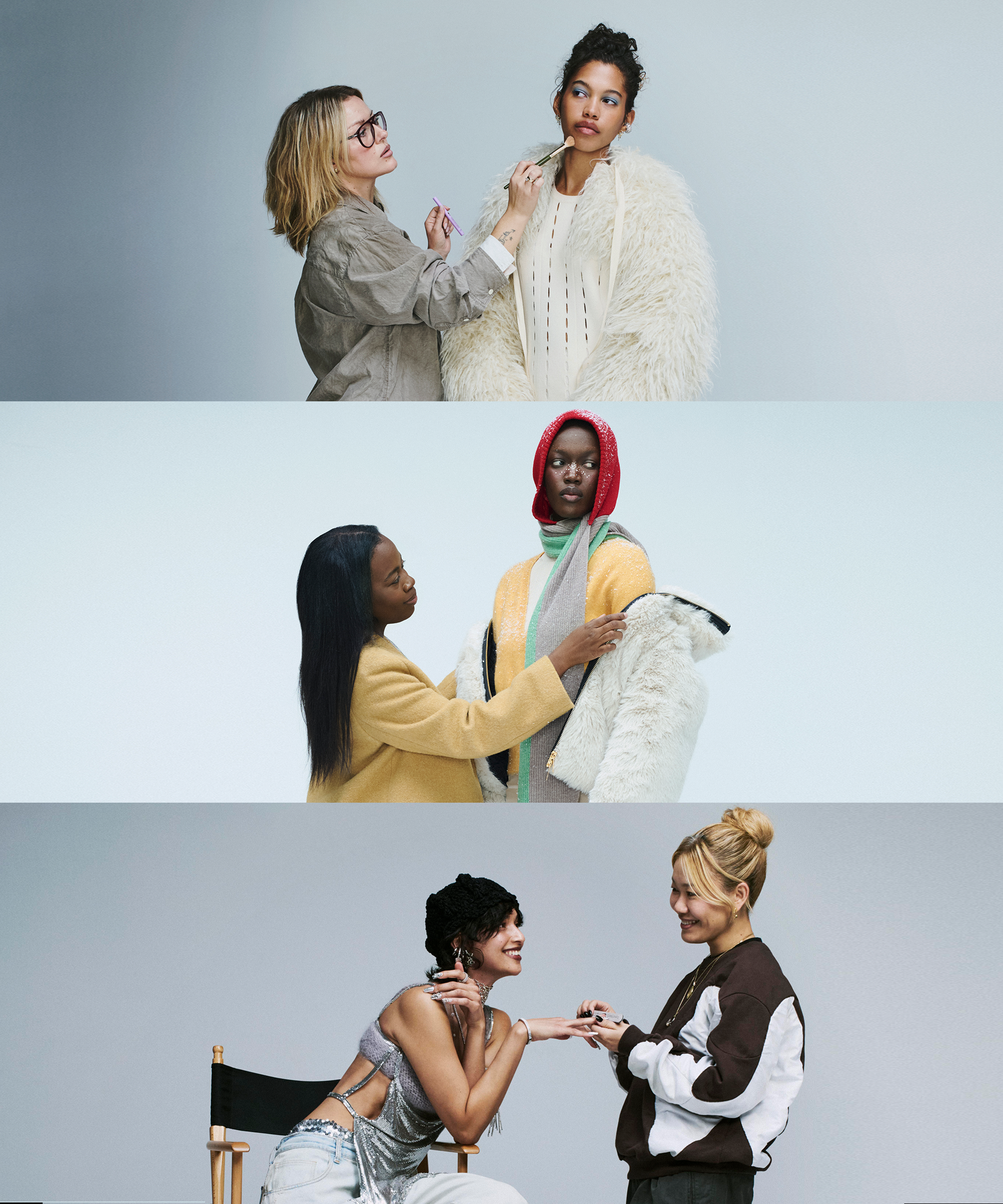
I grew up on the outskirts of Y2K, indie sleaze, and the Tumblr era. A baby Internet sage, I observed and reblogged, always on the periphery of the conversations that captivated me but in which I felt I could never actively participate. This past August, Netflix added Ugly Betty to its catalog, and a wave of nostalgia inspired me to rewatch the show. Now that I am a writer and can shape the conversation, I have come to a realization: Betty’s fashion sense not only allowed Latinas to picture ourselves in the fashion world but also helped pave the way for us to celebrate our individuality and self-expression.
From 2006 to 2010, during the show’s run, Betty changed as much as a woman can in her early twenties, becoming more confident and sure of herself. At the time, I also changed as much as an eccentric, theatrical girl can from ages 7 to 11, learning what behaviors others expected of me. When I first watched the show, I identified with Betty only in our shared experiences as outsiders, both unafraid to express ourselves despite facing rejection. However, I didn’t fully understand the complexities that made Betty an outlier in the fashion world. As a current fashion writer, I see myself in Betty now more than ever.
“Betty, and her portrayal by the equally iconic America Ferrera, not only helped Latinas see themselves as part of the fashion world at a time when the beauty standard was thin and Eurocentric, but she also became an icon of early 2000s fashion.”
NATASHA LÓPEZ
New York Fashion Week came shortly after I started rewatching Ugly Betty. Throughout the week, while trying to meet new people or in the middle of a show, I would zone out and start comparing my own experience as a writer to Betty’s:
It’s a vision from the pilot episode. Betty microwaves empanadas at work, appalling everyone at Mode. Cut to a memory of me bringing arepas to lunch as a kid, and my classmates thinking it was weird. Now my physical body has become the arepa, and I’m taking up a lot of space at this fashion show, and everyone is wondering why this arepa is sitting in the front row.
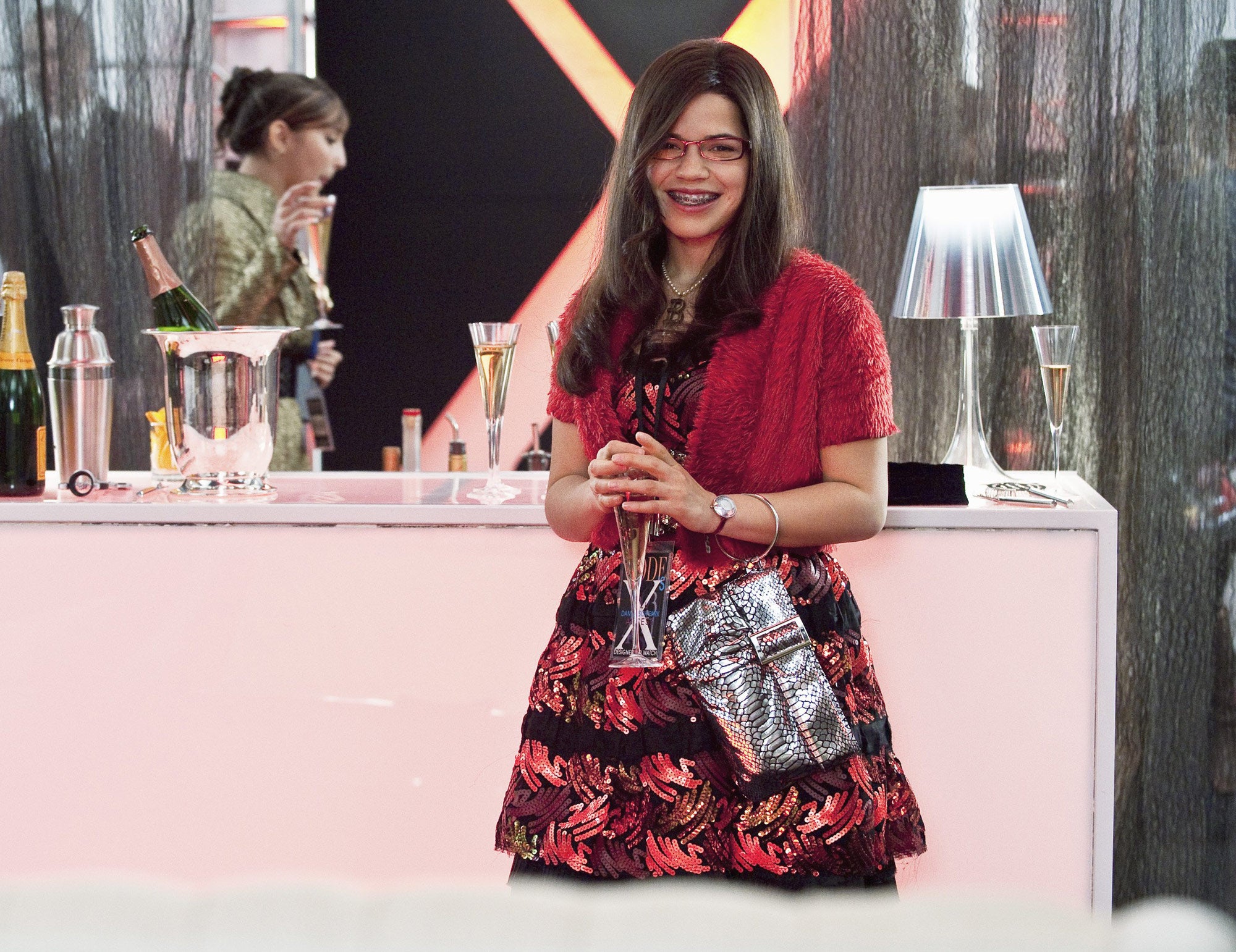
I snap back into my body and remind myself that even if I were a giant arepa, it’s not 2006 anymore. I’m lucky to work in a side of fashion full of people who would appreciate an arepa.
Betty, and her portrayal by the equally iconic America Ferrera, not only helped Latinas see themselves as part of the fashion world at a time when the beauty standard was thin and Eurocentric, but she also became an icon of early 2000s fashion. Her style continues to serve as maximalist inspiration in 2023. Take her signature colorful and printed tights, which are having a bit of a renaissance.
“As someone who hasn’t always had the steadiest footing in this industry, I’m similarly letting go of the narrative that says only a few types of people deserve to take up space in fashion and media. Watching Betty navigate this tough industry and land at the top was the push I needed, and I’m not alone.”
Natasha López
Despite her successes, Betty struggled to break out of the limiting box that others placed her in. Near the end of the final season, her sister, Hilda, tells Betty she needs to let go of others’ opinions of her, that she’s just a “dork with glasses” that people don’t take seriously. “You are who you are, and the sooner that you’re okay with that, the sooner that you see what I see, the happier you’re gonna be,” she tells her.
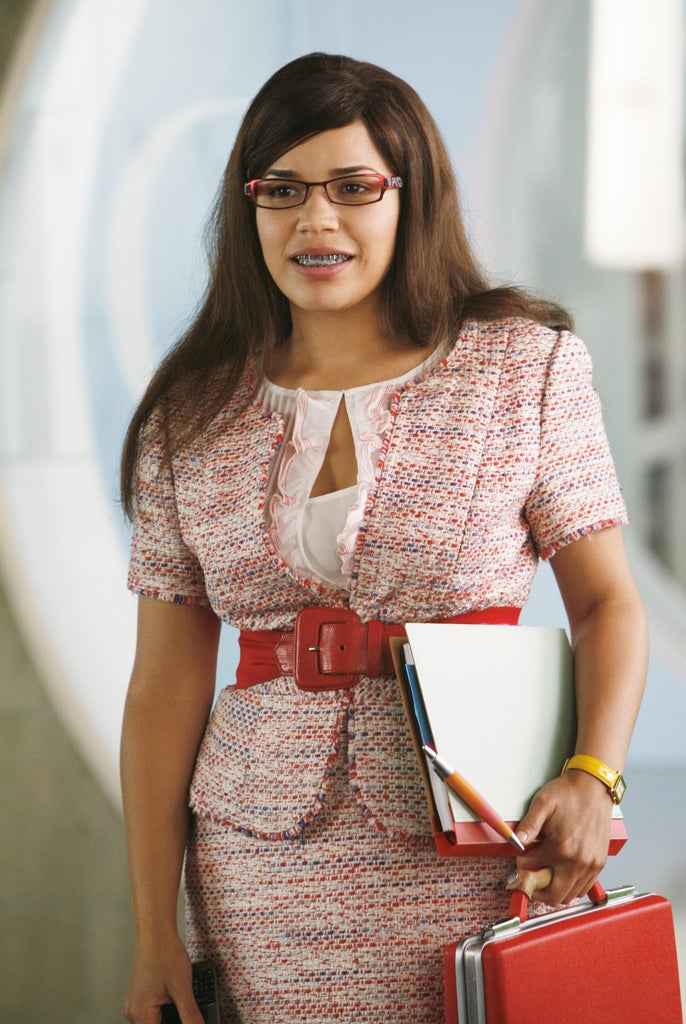
As someone who hasn’t always had the steadiest footing in this industry, I’m similarly letting go of the narrative that says only a few types of people deserve to take up space in fashion and media. Watching Betty navigate this tough industry and land at the top was the push I needed, and I’m not alone. While nearly 20 years old, Ugly Betty continues to inspire young Latinas who work in fashion. Here are four Latinas who have refused to let any standards stop them from making their mark in fashion.
Jazmine Rogers, 27, CEO & Founder of Sustainable Baddie
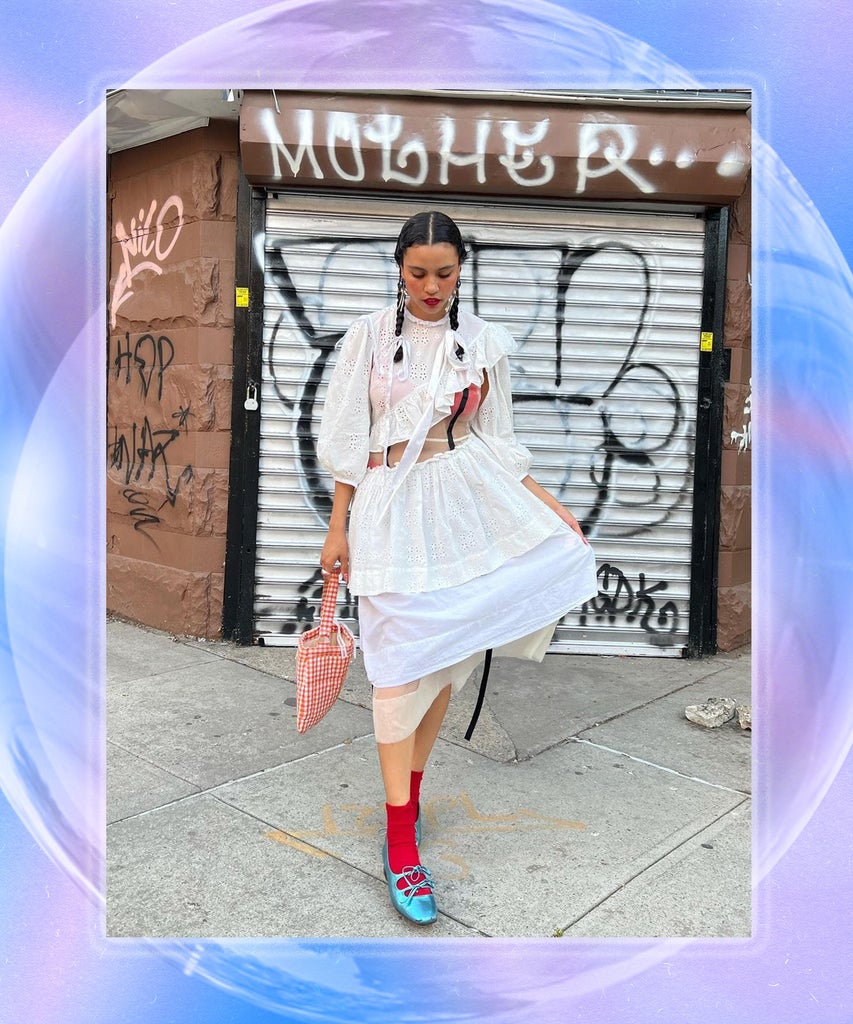
One of my more clowncore outfits was turned into a meme on Twitter once. I was compared to Ugly Betty. I understood where she’s coming from, where you’re a misunderstood eclectic person and no one takes you seriously.
It took time, but I’ve found a following of people who enjoy this style of clothing. You have to push past this barrier of people putting you down for what you’re wearing, but once you do, you’re able to find a community of people who embrace you. Betty walked so I could run; she was the blueprint. She allowed us other girlies of color to be able to do what we want and have representation.
Ugly Betty, like a lot of Y2K media, had a huge influence on this generation of women in fashion. Every 2000s rom-com you watched, the main characters always worked at fashion magazines, and growing up, l loved the glitz and glamour of it. Also the community of it — the girlies in the office talking about what’s in style, running from cubicle to cubicle and they’re all dressed up in designer. It was so fanciful and fun.
“Betty walked so I could run; she was the blueprint. She allowed us other girlies of color to be able to do what we want and have representation.”
Jazmine Rogers
But there was also so much feeding into body dysmorphia, encouraging eating disorders, and considering size fours and above as plus size. It’s just so tragic. Those issues are still prominent in fashion, but when you lean into what the people want, everybody responds so much more positively. Like Betty, I’m trying to bring life, humanity, and values back into magazines and the fashion world through Sustainable Baddie. I want to encourage people to be loud and be proud, wear what you want if it makes you feel good. Do it, layer, put the skirts over the pants, put the dresses over the skirts over the pants, like just go out there and have fun because life’s so short, and I’m tired of us constantly being stifled.
Samantha Durán, 25, Fashion Influencer & Inclusive Stylist

Spending the summers with my cousins and aunts in Venezuela, we spent much of our time watching Ugly Betty. Even as a little girl, I definitely felt a connection between Betty and me. Growing up with a disability, I had very low self-esteem. Not only was I disabled, but I was awkward and a “tomboy.” My style at the time was grossly underdeveloped and embarrassing to look back on. Worst of all, I was relentlessly bullied for being disabled. I live with Maffuci syndrome.
Much like Betty, I eventually blossomed out of that awkward phase with a lot of work on my confidence and developed into the fashionista and the disabled icon I am today. My disability is an integral part to my identity. From the time I was 12 years old onward, I started wearing shorts and skirts and dresses, and fashion became an extension of the real me. I started using fashion as a vessel of autonomy over my body that often deals with symptoms that I cannot control. I can’t control my disability, but I can control what I wear.
“I started using fashion as a vessel of autonomy over my body that often deals with symptoms that I cannot control. I can’t control my disability, but I can control what I wear.”
Samantha Durán
What I love about the intersection between maximalism and Latina identity is that they tend to be very colorful, just like me. I think maximalism is ingrained in many Latin American cultures. A lot of countries’ traditional fashion embraces bold color, intricate embroidery, and mixing patterns. I immediately picture the dance dresses that sway around in traditional dances and are worn with each country’s colors and silhouettes. I love to wear very bright colors, exaggerated pieces that others usually consider statement pieces. To someone who isn’t a maximalist, they might wear these things for a special event, but I love to wear them in my day-to-day life. I love puffy sleeve tops, statement pants with patterns, and I always wear accessories.
It’s a strange feeling going from being treated so poorly and so differently for something as trivial as your physicality, to being given all of this attention for being so unapologetically disabled, fashionable, and for also inspiring the same confidence in other disabled people.
“Being disabled has truly been my greatest fashion inspiration. I went from hiding my body, hiding my disability, to learning how to express myself and liberate myself and my disability.”
SAMANTHA DURÁN
In my first fashion video, I basically cloned myself. I was sitting in my wheelchair on one side of the video and standing in the other to demonstrate how clothing can fit differently when you’re seated versus standing and highlight the importance and the need for adaptive fashion.
Being disabled has truly been my greatest fashion inspiration. I went from hiding my body, hiding my disability, to learning how to express myself and liberate myself and my disability. Fashion has always been, I think, a political statement in one way or another across all centuries, and maximalism allows people to reclaim themselves, reclaim autonomy over themselves in a society that’s constantly trying to oppress us, put us into boxes, and tell us that we can’t do certain things.
Veronica Bonilla, 29, Fashion Blogger & Founder of Brooklyn Petite
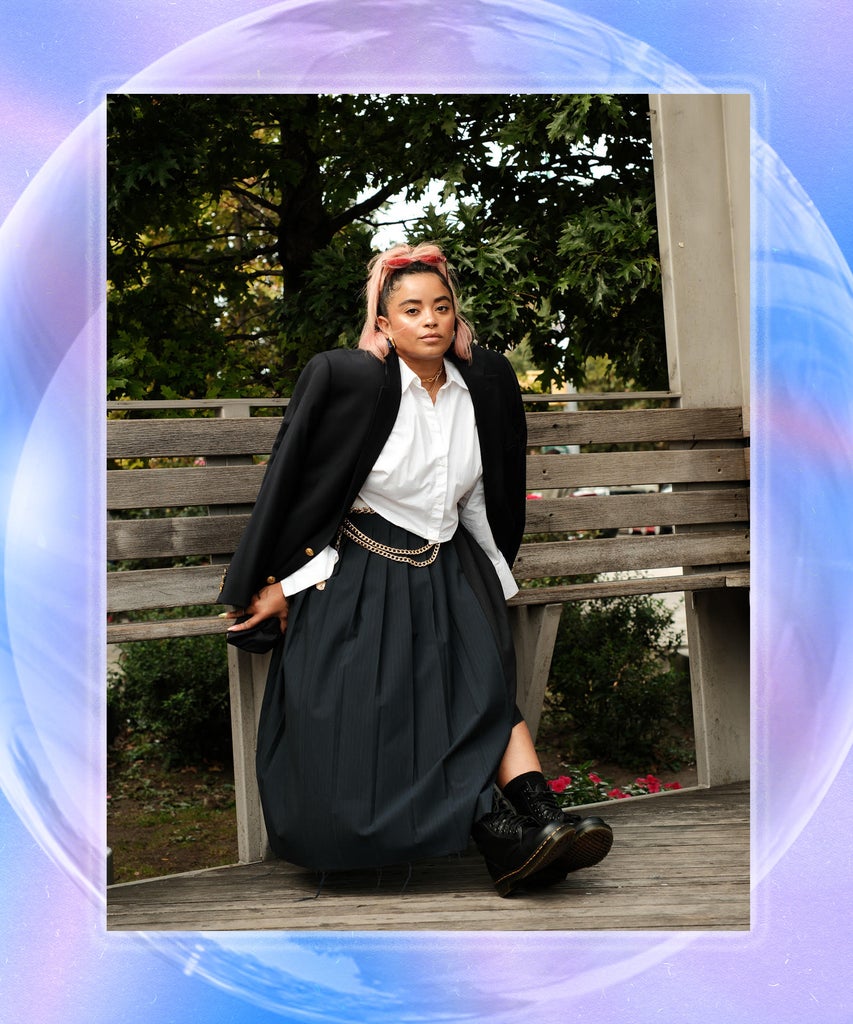
I grew up in Brooklyn in the 1990s and early 2000s. My upbringing as Puerto Rican New Yorker has been a huge influence on my passions. Today, I’m a full-time fashion blogger and content creator. Once I got that freedom into learning my own personal style, it was everything for me. Growing up, me and my cousins would have sleepovers at my grandmother’s house. They were in their teenage years, and it was nice to see the way that they were planning out their outfits when they were going out or to hang out with their friends.
Seeing what kind of energy they would tap into and the moment my cousin put this outfit on, she was like this other completely new person to me. She tapped into that confidence when she put on that outfit. The more I saw that, the more I loved fashion. Witnessing that feeling and then actually having that feeling right after opened a Pandora’s box for me in the fashion world.
“Betty was super motivating for me, especially because I was tapping into the fashion world, and it made me feel that sense of comfortability, like, ‘Okay, if she can do it, then I know I can definitely do it.’”
Veronica Bonilla
When I was entering the fashion industry, I didn’t necessarily feel like I fit in because of how this world was portrayed in the media. When I was watching Ugly Betty, I thought, “Okay, it makes sense I feel like this. I’m not the only one who feels like an outsider.”
I love to be unapologetically myself and I show that with my clothes, and I hope that’s the message that other people can see: that you don’t have to close yourself off or have to dress a certain way to be accepted. Betty was super motivating for me, especially because I was tapping into the fashion world, and it made me feel that sense of comfortability, like, “Okay, if she can do it, then I know I can definitely do it.”
We’re in this era where everybody is doing a lot of the same things when it comes to following trends, and it’s not a bad thing, but if you want to follow trends, how do you show up as yourself? Having a personal approach is so important, because it’s what makes you unique. For me, my blog became a place to talk about issues surrounding being a petite curvy girl and how difficult it can be to find certain pieces, and people were able to relate to that. Never let fear control you. That’s only going to stop you. There are so many dreams buried in cemeteries because someone never took that leap of faith. If you have that fear it means you’re heading in the right direction. Tap into it, and you’re gonna discover the impossible.
Hermelinda Calderon, 29, Content Creator
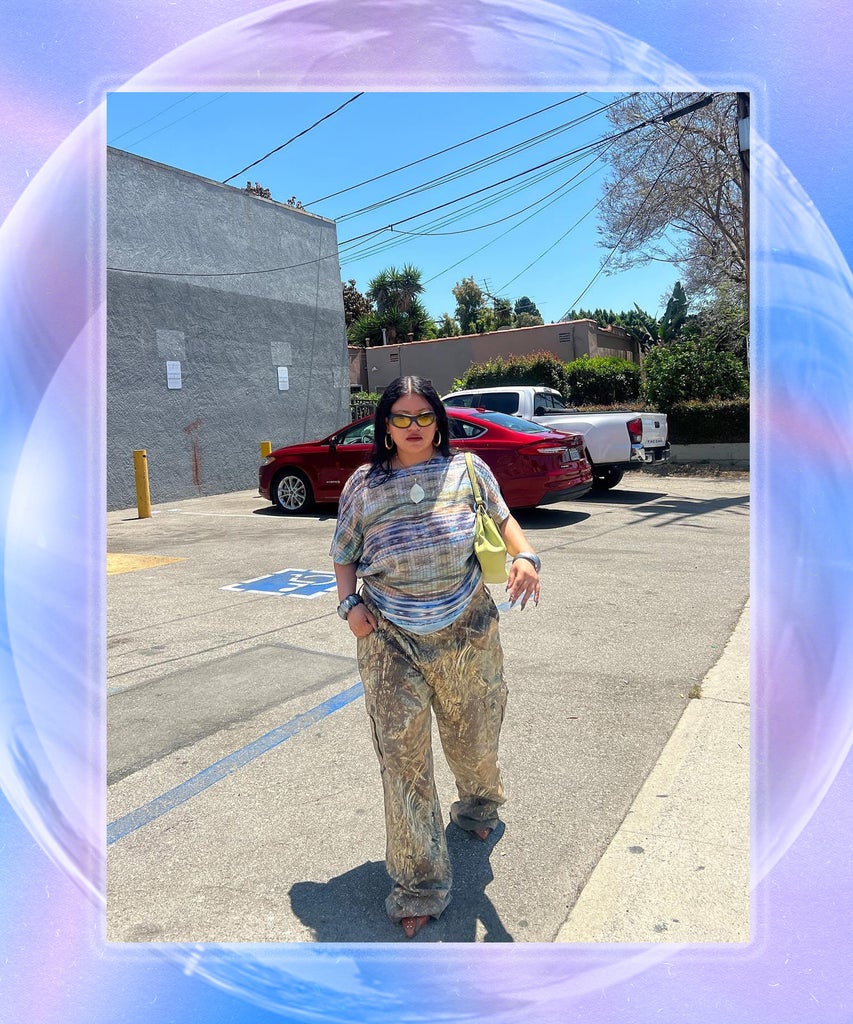
Oftentimes media portrays Latinas as sexy and powerful women. We are sexy and powerful, but there’s so much more to us than just that. The early 2000s are hugely influencing today’s fashion. During that time, Latinas were always seen in tight clothing, low-rise jeans, and a lot of outfits for the male gaze. I love a good male-gaze outfit and I’ll put one on whenever I feel like I want to, but I don’t like being in a box. I constantly try to push myself out of whatever box I feel like I’m being constricted into. I’ve started to redefine what being a Latina means. Exploring my fashion sense has helped me redefine that and reformulate what society says that a Latina should be and look like, because we come in different colors and different shapes and sizes.
I’ve always loved fashion. I’ve always loved clothes. I’ve always loved styling. As a kid, I would borrow my mom’s clothes because I thought it was so much cooler. Just the thought of having something different, especially older clothing, would always catch my attention. Early in the pandemic, I began exploring my style on Instagram. One Latina influencer who really inspires me is Benulus — not only her fashion, but just her being authentically herself. She inspired me to channel that into myself. As my audience grew, I started realizing there’s power in me being me, and me sharing my clothes, my style, and my fashion. I think people forget that it’s so much more than just clothes.
“Exploring my fashion sense has helped me redefine that and reformulate what society says that a Latina should be and look like, because we come in different colors and different shapes and sizes.”
Hermelinda Calderon
Betty was herself, but I also think she struggled for a long time to come to terms with that. She eventually gets to a point in the show where she’s like, “No, this is who I am.” She really embraced it, and I think that’s when things started to shift for her at Mode. That’s the power in being authentically yourself — no matter how uncomfortable it is to yourself or to others.
She’s such an icon when it comes down to being different. Everybody wants to fit in at a certain point in their life, but you’ll eventually get to a point where you no longer fit in and that’s okay. No matter what, where you are or what you’re doing, you have to be yourself. Everything else will fall into place. It sounds cliche, but everything is drawn to you once you become truly comfortable in who you are.
Interviews have been edited for clarity and brevity.
Like what you see? How about some more R29 goodness, right here?


